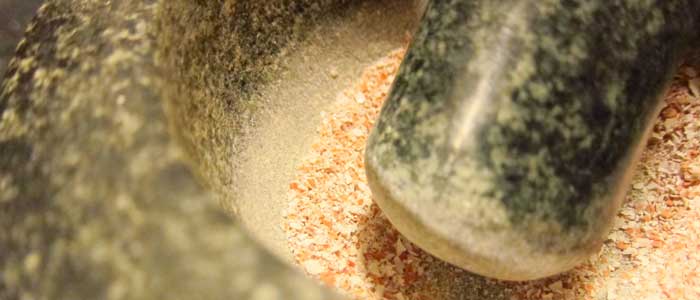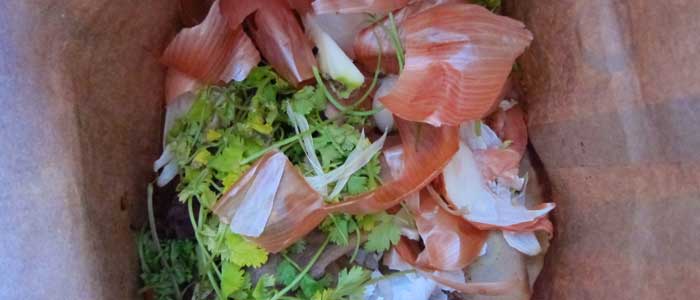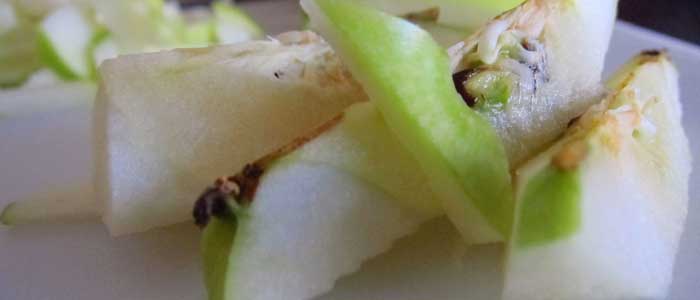I’ve seen the look before.
A couple years ago, I arrived to work. It was early, but the kitchen seemed eerily quiet. The guys who were normally chatty and silly were sullen and glassy-eyed. While this usually meant a hangover, something was different on this morning. We were all busy prepping food, tables and such. At some point, I asked someone why they were so quiet.
“Oh, Logan, Gunny and Matt watched The Cove last night.”
Like many, I couldn’t bring myself to watch it. I listened to a couple interviews with the director. That was all I could handle. I’m a movie crier, so I have to be careful. Five times I cried during the first Transformers. I have a thing for watching people coming to the rescue of those in need, especially when those people are the Autobots. And when Bumblebee was being tortured? When Prime went down? Yeah. I will never be able to watch The Cove.
Still, with my issues, I troll Netflix’s documentary section often. One night, I watched Collapse. Roger Ebert wrote that he couldn’t recall if he had ever “seen a thriller more frightening.” Collapse is a documentary. It should educate. It should enlighten. But should it scare as much as a thriller? I think it was so frightening because it could—and Ebert didn’t hedge with a “could”— be true.
That look in the eye, the look that was in the eyes of the boys—that’s the look I had and that, I imagine, Ebert had, too, after watching Collapse. I’m not sure if Robert Ebert did anything about it except write a chilling, thoughtful review. Besides bearing witness, I wasn’t sure I was going to do anything. But then one day, I ordered worms.
Schedule for delivery was in one to three days. I worried because it was so cold outside. How the hell could they survive below freezing temps? I’ve never ordered anything that was so perishable, and it was the most thrilling delivery I’ve ever experienced. You’d think I had ordered kittens.
Things changed when the box finally arrived. I stared at it like John Turturro staring at the box in Barton Fink. Opening it immediately, I peered inside, hopeful that the little guys survived. Reluctantly, I opened a drawstring, and nestled in the dirt, they sleepily trembled. Within minutes, they had disappeared. What a freakin’ relief! They were still alive.
Days passed by. Like a Rorschach Test, a pattern began to form on the bottom of the box. It was leaking. It was also time to move them into their new home, a five-gallon bucket.
Why did I wait?
Keeping worms involves a lot of waiting for two reasons: You wait for your worms to do their job and make the best compost ever; and you wait to inoculate.
Inoculate Means Feed
Like anything, there’s a lexicon or unique cluster of words associated with whatever it is you are getting yourself into, right? Vermiculture, soil amendments, castings, leachate, soil drench, red wigglers, eisenia fsetida—there’s a lot to become acquainted with. And some words don’t get enough attention in the literature as well as the thousands of videos, websites, comment sections, blog posts, yada, yada.
I’ve spent months pilfering these places. Instead of duplicating what many of them got right, I’ll just mention a couple persistent omissions or misunderstandings.
“Inoculate” is not a difficult word. But when it comes to the worms, inoculate means you introduce microbes. Said in a different way, you feed the worms.
Worms do not eat all the once lovely food scraps. They don’t eat banana peels and egg shells and coffee grounds and shredded bits of last Sunday’s New York Times. Instead, they eat the microscopic organisms – protozoa, fungus, bacteria, etc – eating those things. That the scraps of food and paper disappear is the lovely consequence of the worms’ appetite.
Some recommendations involve adding a little soil to the bedding because the soil is full of the microbes. Some do not. Some say you should “age” or “season” the bedding by keeping it damp for a week or two before adding the worms. Some recommend letting the food scraps sit out and “rot” for a bit (again, aging or seasoning). A couple days. A week. I’ve found that all of this is quite negotiable because so many sites vary in their recommendations and because worms are very, very hearty. Still, there just aren’t enough sites—including too many university and extension office sites – that don’t make this clear. In the end, microbes are in the air, much like yeast. They’ll find their way to your kitchen scraps, tufts of hair and shredded paper towel rolls that are not too wet and awaiting the creepy and crawlies.
I still added some dirt, and I waited for the bedding to teem.
The Pharynx
Like James Cameron’s Alien, worms eat by ejecting their pharynx outside of their body and pullling in whatever it is they’re aiming at. And just like a bird, they swallow their food whole and do all the “chewing” or mechanical digesting with a gizzard. In order to do this, they need grit. Birds swallow pebbles. Worms can snatch up grains of sand from soil you throw in or from pulverized or broken up egg shells, for instance. Most sites didn’t even mention this part. I think it’s helpful to understand this pretty cool detail.
Vermicompost Tea
This was the most misunderstood and hotly debated worm-centered subject out there. So many people think that the fluid that drips out of your bin is compost tea. So many recommend putting it on your plants, mixing it water, letting it ferment, aerating it, buying a backpack spraying and spraying it all over, etc.
The psychology behind the excitement has, in part, to do with delayed gratification. While you wait the four months for the worms to do their thing, you get to enjoy these drippings that can dramatically, goes the hope, improve your plants health. Some sites go as far as to say they kill plant pathogens, speed up growth, obviate even the need for buying fertilizer.
The truth is that the crap that drips from the bottom is not compost tea. It’s just extra water seeping from rotting stuff. “Compost Tea: Examining the Science Behind the Claims,” a paper put together by Dr. Linda Chalker-Scott is a great place to start if you’d like to begin with the science on regular compost tea.
Another paper – “Brewing up Solutions to Pest Problems” — published in Biocycle, a journal you’ll often find listed on the academic sites if you want to do further reading, includes actual fighting words between the scientists. I can’t believe they included the sass! I’ve never seen such a thing in an academic paper. Although it is about compost tea versus vermicompost tea, it’s still germane and an unexpectedly entertaining as well as informative read.
Not to belabor this, but to give you an idea of how unsure academia is about the tea, a highly cited paper put out by the University of Minnesota Extension gives instructions about the tea and makes nary a mention of anything uncertain about its benefits. Washington State University is much more measured with its discussion about tea in, “To Tea or Not To Tea.”
Sites That Get It Right
Red Worm Composting – Of everything out there, this site is the absolute best. Created and maintained by a guy named Bentley Christie back in 2006, it’s a realm replete with interviews from the worm composting pioneers, movers and shakers in the field, professionals, researchers and Bentley’s own experiences composting. He’s constantly experimenting, taking pictures, making videos, etc. For instance, he composted down a plastic-lined disposable coffee cup, something I’ve wondered about. The worms ate it all save for the plastic, which he just picked out. They ate a t-shirt, though. He also sells worms, fancy worm habitats, etc. He was also invited to contribute to the most exhaustive, intimidating book out there on worms, “Vermiculture Technology: Earthworms, Organic Wastes, and Environmental Management.”
Rhonda Sherman, Extension Specialist at North Carolina State University
This academic, also one of the authors of the above-mentioned book, is one of the vermicomposting celebrities out there. She has a great web presence and is involved in a lot of research.
This is the most “hip” site I’ve been able to find as well as one of the most accurate sites I’ve found.
This site is so refreshingly thorough in its details. Even better, though, is they are all about the wood. Even before I watched Collapse, I’ve been trying to get away from anything plastic. BPA scares the crap out of me. I’m going to be switching over to a wooden container for my worms. I should have started out with something wooden at the beginning, but I wanted to build it myself. I already had the bucket, and, well, there it is.
Local and like Bentley, these ladies—Stephanie and Amber—are impassioned. Also like Bentley, they’re very approachable. They all are quick to reply to questions or comments on their sites or Facebook. Consequently, the conversations you get to read are very thoughtful and helpful.
Any of these sites will include detailed and accurate instructions on how to get started, maintain everything, uses, etc.
Food writing in its purest form is about food. Restaurant reviews seem to occupy the most well-known, pertinent variety. More and more, however, it’s the dicta or extra—the ambient—that interests me. Graze magazine, in its preamble in the first issue, put it so well:
“All of the pieces in this volume relate to food. But food is only the periods, the commas, and the occasional semicolons that act like an egg timer, ticking out a rhythm to the real stories—the stories of the people waiting for the next bite, waiting for the yeast to rise, waiting for the water to boil. Waiting for the thing they’re eating for in the first place.”
Keeping worms feels like a part of this ambient, and I’m sad that it didn’t happen earlier, especially given how much of what we throw away can be fed to the worms. When I’m out shopping, I think of what I can compost before I buy. When I’m cooking, I have a bag set aside for all the scraps. When I’m out at a coffee shop or restaurant, I wonder if they’re not just composting but vermicomposting.
In the movie, Michael Ruppert compares the present day with our country during The Great Depression by observing that back then, most people were growing their own food. His insinuation is that if our economy really does collapse, we’ll be worse off because most of us can’t even grow a houseplant. And so, I also look longingly at my bucket of worms and think that they could help me with not just tomatoes but my life.
I look away, smile and hope I won’t have to deal with a fruit fly infestation. Best to not focus too much on the scary stuff.
Stay tuned for more on worm composting!


